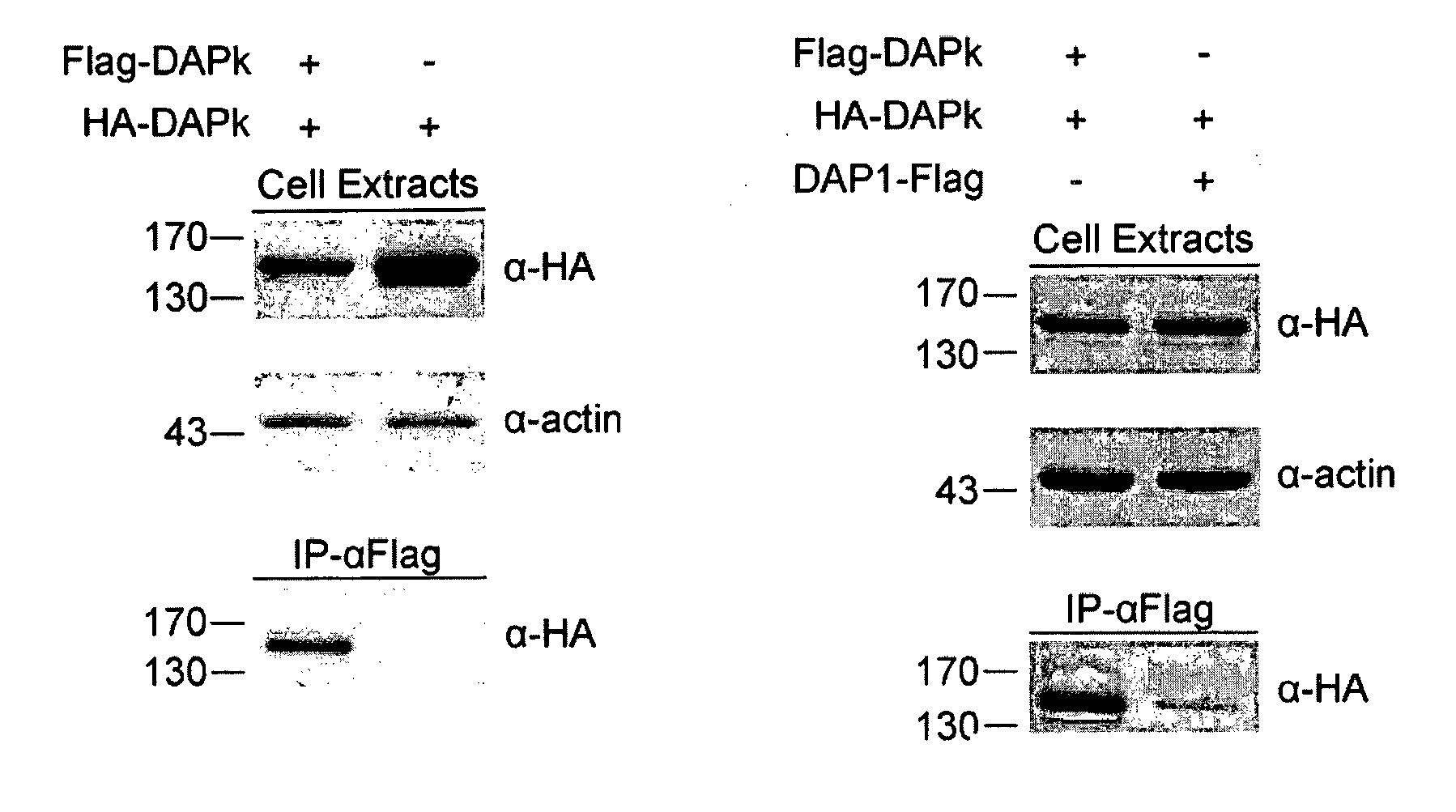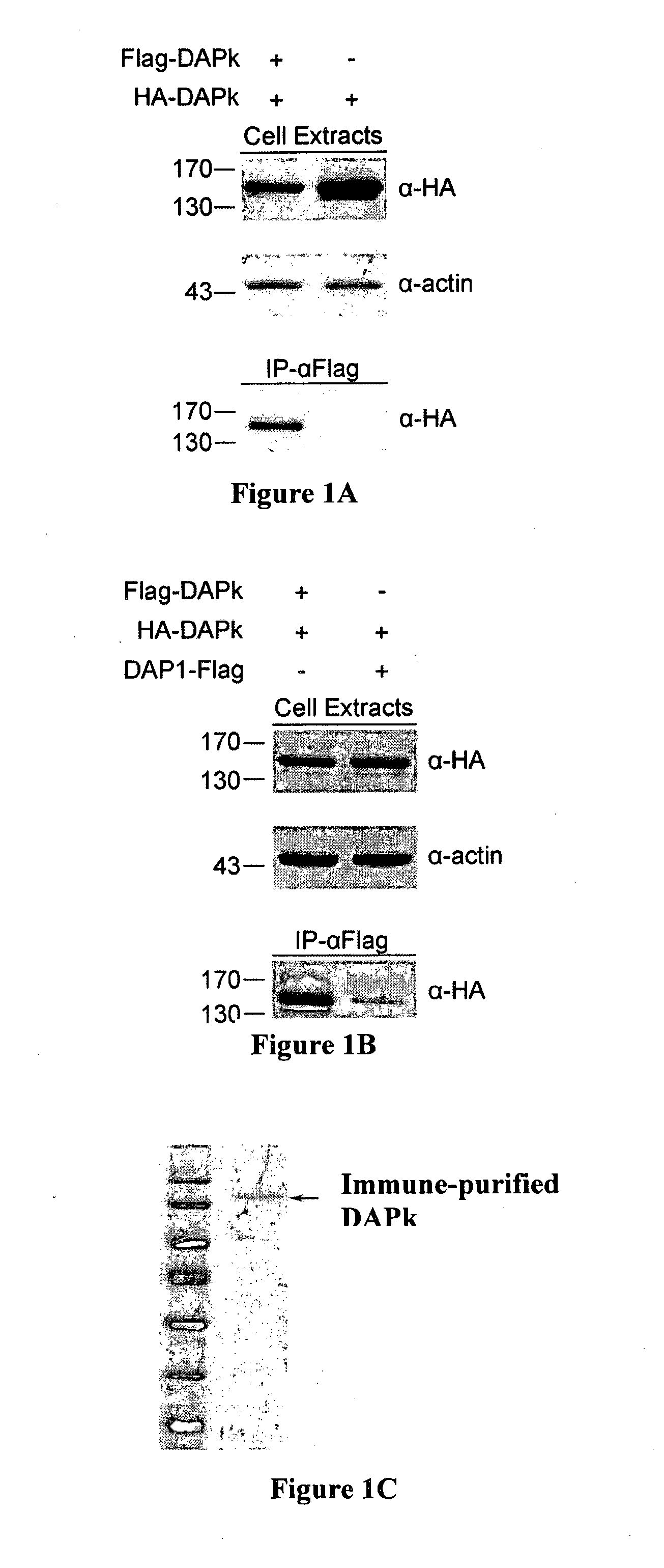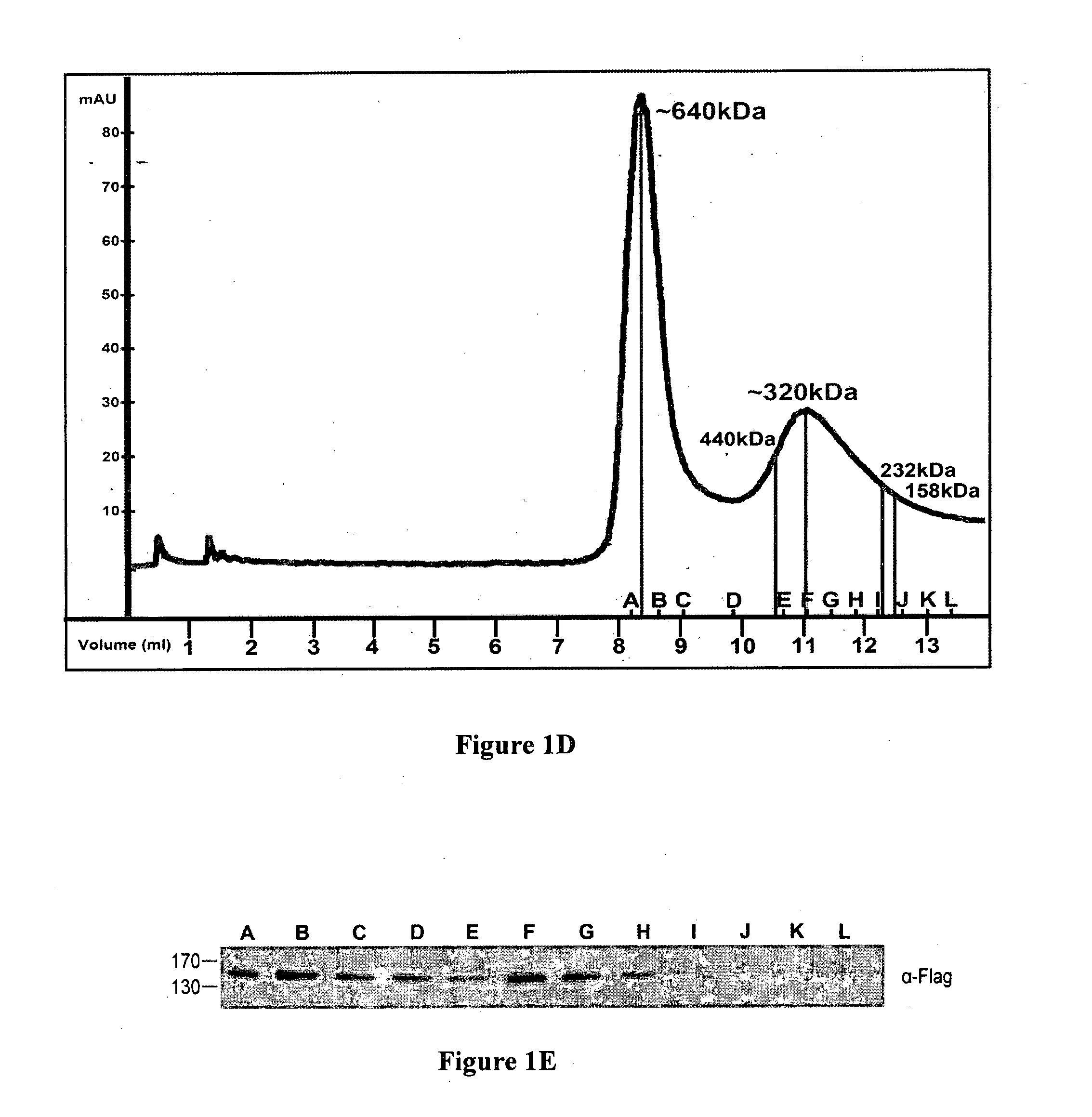Compositions and methods for treating cancer and neurodegenerative diseases
a technology of kinase and kinase activity, applied in the field of compositions and methods for treating cancer and neurodegenerative diseases, can solve the problems of not being able to disclose or suggest agents in background art, and the cellular and biochemical functions of this p-loop have not been studied so far, and achieve the effects of promoting dapk activity, reducing or inhibiting the effect of gtp binding to the roc domain of dapk, and promoting
- Summary
- Abstract
- Description
- Claims
- Application Information
AI Technical Summary
Benefits of technology
Problems solved by technology
Method used
Image
Examples
example 1
DAPk Homo-Oligomerizes in Cells
[0129]Many members of the ROCO protein family, including LRRK1 and LRRK2, form dimers in vivo (Greggio, Zambrano et al. 2008; Klein, Rovelli et al. 2009). Since DAPk was recently included as a member of the novel ROCO protein family, the possibility that DAPk might assemble into homo-dimers, was investigated.
[0130]Differently tagged constructs of DAPk, namely HA-DAPk and Flag-DAPk, were prepared. HEK 293T cells were transiently co-transfected for 24 hours with either both constructs or with HA-DAPk only and cell lysates were subjected to immunoprecipitations with anti-Flag antibodies (IP-α Flag). Immune complexes were analyzed by western blot alongside aliquots of total cell extracts. Western blot analysis revealed the existence of HA-DAPk in the immune complexes formed by the anti-Flag antibodies only if the two DAPk constructs were co-expressed in the cells (FIG. 1A). This suggests that the two different constructs physically interact with each other...
example 2
The ROC and the Kinase Domains Mediate Homo-Oligomerization of DAPk
[0134]The ROC domain has been shown to mediate homodimerization of LRRK2 and heterodimerization between DAPk and LRRK2 (Klein, Rovelli et al. 2009). Thus, the ability of DAPk to homodimerize in a ROC domain dependent manner was investigated either by expressing the ROC domain fragment by itself or by using constructs of DAPk deleted of the ROC domain. In these experiments HA and Flag tagged DAPk constructs were expressed in HEK 293T cells, and immunoprecipitated with anti-Flag antibodies. A schematic representation of the constructs utilized for these experiments can be seen in FIG. 2A.
[0135]HEK 293T cells were co-transfected with HA-DAPk along with either Flag-ROC fragment (amino acids 667-954) or DAP1-Flag. Immunoprecipitation with anti-Flag beads (IP-α-Flag) was performed and immuno-complexes and cell extracts were analyzed by western blot. As seen in FIG. 2B, full length HA-DAPk (DAPk WT) significantly co-immunop...
example 3
DAPk Binds GTP Through the P Loop Motif Located in the ROC Domain
[0139]In order to assess whether the DAPk's putative P-Loop can bind GTP similar to other ROC containing proteins, lysates from HEK 293T cells over-expressing either DAPk WT or DAPk deleted of either the cytoskeletal binding domain (Δcyto—deleted of amino acids 645-844) or the P-Loop (ΔP-loop—deleted of amino acids 695-702) (FIG. 3A) were incubated with agarose beads conjugated to GTP. Bound proteins were washed in the presence or absence of free GTP, and eluted with protein sample buffer. Western blots analysis revealed that significantly, DAPk WT, but not the deletants, specifically bound GTP (FIG. 3B). Competition with the free GTP in the wash reduced this interaction, suggesting that the binding is GTP specific and not unspecific interaction with the agarose beads.
[0140]Example 3 shows that DAPk is a GTP-binding protein, and the P-loop is required for this specific interaction.
PUM
| Property | Measurement | Unit |
|---|---|---|
| Size exclusion chromatogram | aaaaa | aaaaa |
| concentration | aaaaa | aaaaa |
| molecular weight | aaaaa | aaaaa |
Abstract
Description
Claims
Application Information
 Login to View More
Login to View More - R&D
- Intellectual Property
- Life Sciences
- Materials
- Tech Scout
- Unparalleled Data Quality
- Higher Quality Content
- 60% Fewer Hallucinations
Browse by: Latest US Patents, China's latest patents, Technical Efficacy Thesaurus, Application Domain, Technology Topic, Popular Technical Reports.
© 2025 PatSnap. All rights reserved.Legal|Privacy policy|Modern Slavery Act Transparency Statement|Sitemap|About US| Contact US: help@patsnap.com



